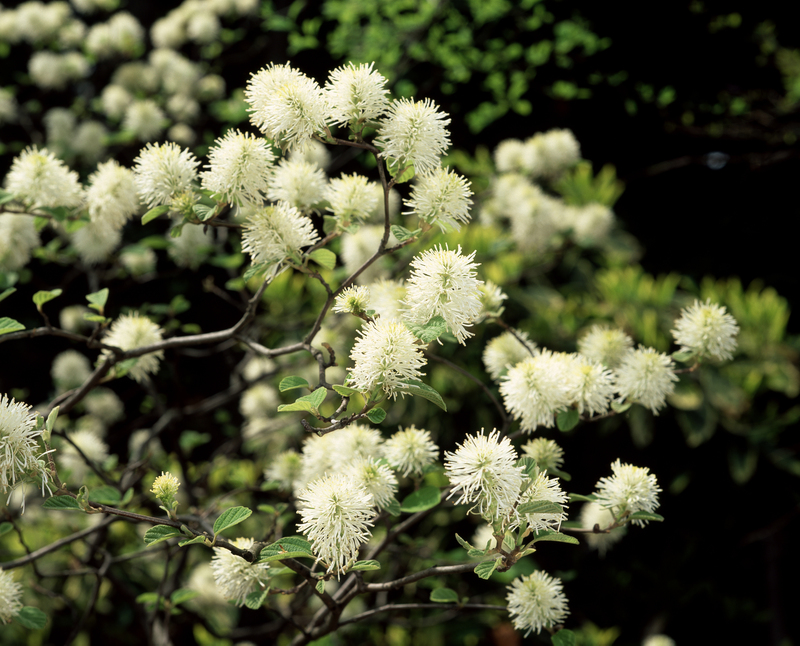Transforming Organic Waste into Nutrient-Rich Soil for Sustainability
Posted on 25/09/2025
Transforming Organic Waste into Nutrient-Rich Soil for Sustainability
In our modern world, sustainability has quickly become the cornerstone of environmental action. One of the most powerful and accessible strategies for a greener planet is the conversion of organic waste into nutrient-rich soil. This process not only diverts waste from ever-growing landfills but also creates a valuable resource integral to healthy plant growth and robust ecosystems. In this article, we'll explore comprehensive methods, benefits, and essential tips on transforming organic waste into fertile soil for sustainability -- whether in your backyard, your community, or on a larger agricultural scale.
Understanding Organic Waste and Its Potential
Organic waste refers to material derived from living organisms. This includes food scraps, yard trimmings, paper products, coffee grounds, eggshells, and even hair or nail clippings. Vast amounts of such waste are generated daily in households, restaurants, and businesses worldwide. Yet, when thrown into landfills, organic waste breaks down anaerobically (without oxygen), producing methane, a potent greenhouse gas.
However, when managed effectively, organic waste can be transformed into nutrient-packed compost -- an invaluable product that enhances soil health, boosts crop yields, and minimizes environmental impact.
Why Does Organic Waste Matter?
- Landfill Reduction: Organic waste typically accounts for 30-50% of household garbage. Composting diverts that waste stream.
- Climate Action: Reduces methane emissions associated with landfill breakdown.
- Soil Health Boost: Compost enriches the soil, supplying vital nutrients for plants.
- Circular Economy: Promotes recycling of resources and closes the nutrient loop.

The Science Behind Composting: How Waste Becomes Nutrient-Rich Soil
Composting is the controlled biological decomposition of organic material by bacteria, fungi, and other organisms in the presence of oxygen. The result is humus: a dark, crumbly, earthy-smelling material teeming with nutrients and beneficial microbes.
Key Components of Compost
- Greens (Nitrogen-rich materials): Vegetable peels, fruit scraps, coffee grounds, grass clippings
- Browns (Carbon-rich materials): Fallen leaves, cardboard, shredded paper, straw, sawdust
- Water: Moisture is crucial for microbial activity but not to the point of sogginess.
- Oxygen: Aeration allows beneficial bacteria to thrive and breaks down materials efficiently.
The Stages of Composting
- Mesophilic Phase: Initial decomposition by moderate-temperature bacteria. Fast activity, heat begins to build.
- Thermophilic Phase: When temperatures rise (up to 70?C/160?F), heat-loving microbes digest proteins, fats, and other tough matter. Weed seeds and pathogens are destroyed.
- Maturation & Curing: The pile cools, and fungi, worms, and actinomycetes break down remaining material, forming stable, nutrient-rich humus.
Home-Scale Composting: Turning Household Waste into Black Gold
Transforming organic waste at home is highly effective, easy, and extremely rewarding. Backyard composting is the most accessible method for individuals and families.
Setting Up a Compost System at Home
- Select a location: Choose a spot that is well-drained, semi-shaded, and easily accessible year-round.
- Choose your compost bin: Open piles, tumblers, and enclosed bins all work. Ensure good airflow and retain some moisture.
- Balance the ingredients: Layer greens and browns in roughly equal proportions to optimize decomposition.
- Aerate regularly: Turn the pile every few weeks to introduce oxygen and mix materials for even breakdown.
- Monitor moisture: The pile should feel like a wrung-out sponge. Add water or dry browns as needed.
Types of Home Composting:
- Traditional/windrow composting: Piled heaps, turned periodically.
- Tumbler composters: Sealed, rotating barrels speed up aeration and reduce pest access.
- Vermicomposting: Uses red worms to transform food scraps into high-quality vermicast. Great for indoors or small spaces!
- Bokashi: An anaerobic process using bran inoculated with microbes. Produces pre-compost for burying in soil.
Community and Large-Scale Composting Solutions
While home composting is impactful, commercial or municipal composting facilities handle vast quantities of organic waste from cities, institutions, and agriculture. Such operations are essential in closing the loop on our collective food and yard waste.
Benefits of Community Composting Initiatives
- Reduces municipal landfill costs and saves taxpayer money.
- Provides nutrient-rich compost for community gardens, parks, and urban farms.
- Engages citizens in sustainability and environmental education.
How Large-Scale Composting Differs
- High-volume equipment: Industrial grinders, windrow turners, and temperature management allow for rapid, large-scale decomposition.
- Strict regulations: Facilities are often monitored for nuisance odors, leachate, and contamination.
- Diverse inputs: Includes food processing residues, agricultural byproducts, and more, ensuring a robust nutrient content.
From Waste to Wealth: Composting Benefits for People and Planet
The transformation of organic waste into nutrient-rich soil isn't just an environmental practice -- it's a tangible route to economic, societal, and ecological gain.
1. Environmental Benefits
- Mitigates greenhouse gas emissions by diverting organics from landfill.
- Improves soil structure, porosity, and moisture retention.
- Restores depleted soils and reclaims degraded land.
- Increases biodiversity by supporting beneficial soil microbes and insects.
2. Economic Advantages
- Lowers fertilizer and water costs for farmers and gardeners.
- Creates jobs in waste management, agricultural extension, and urban farming.
- Compost sales bring revenue for municipalities and green businesses.
3. Social Gains
- Promotes food security by improving yields and resilience in home and community gardens.
- Educates and empowers citizens to participate in local sustainability efforts.
- Builds stronger communities around shared environmental goals.
Using Nutrient-Rich Compost to Rejuvenate Soil
When your organic waste is converted to mature compost, how can you use it for maximum impact?
Top Uses of Nutrient-Rich Soil from Composting
- Amending garden beds - Mix into topsoil before planting for healthier veggies, flowers, and shrubs.
- Mulching - Spread around plants to retain moisture and suppress weeds.
- Top-dressing lawns - Promotes deep roots and disease resistance.
- Indoor plant care - Blend with potting mix for a natural boost.
- Restoring eroded or infertile land - Large applications rehabilitate mining sites and poor soils.
Common Challenges and Best Practices in Transforming Organic Waste
What Not to Compost
- Meat, dairy, fats (attract pests, slow decomposition)
- Diseased plants or weeds with seeds
- Chemically treated wood or paper (toxins)
- Pet wastes (potential pathogens, unless hot-composted specifically)
Tips for Successful Composting
- Balance your greens and browns: Too much green creates a smelly, soggy pile. Too many browns halt decomposition.
- Keep it moist but not drenched: Regularly check moisture, especially during hot or dry weather.
- Chop large materials: Smaller pieces break down faster.
- Turn or aerate regularly: Oxygen keeps beneficial microbes happy.
- Be patient: Home compost can take from 2 months to a year depending on method and materials.
Innovations and Trends in Organic Waste Upcycling
As the circular economy gains traction, inventive technologies are revolutionizing how we upcycle organic waste into soil amendments.
- Smart composters use sensors and automation to monitor temperature, moisture, and air for perfect conditions.
- Black soldier fly larvae composting converts food waste rapidly while producing protein-rich feed and frass for soil.
- Biochar production transforms organics into a stable carbon-rich soil amendment that locks carbon for centuries.
- Decentralized urban composting hubs are popping up in cities, empowering neighborhoods to manage waste locally.

How to Start Transforming Your Organic Waste Today
Ready to join the movement turning waste into wealth and supporting a sustainable future? Here's how to begin:
- Assess your organic waste stream -- what percentage is compostable?
- Set up a simple compost bin or join a local food scrap drop-off program.
- Educate household members on what can and can't go in the bin.
- Connect with neighbors or community gardens -- many accept food scraps or run composting workshops.
- Advocate for curbside composting if your city doesn't have a program.
- Use your finished compost in your own garden or share with friends and local growers!
Conclusion: Transforming Organic Waste for a Healthier, Greener World
Transforming organic waste into nutrient-rich soil is a cornerstone of true sustainability. This simple yet profound practice bridges environmental stewardship, economic resilience, and community empowerment. Whether you compost at home, join local initiatives, or advocate for larger-scale systems, every action contributes to a healthier planet and a future where waste becomes a resource, not a burden.
Begin today -- and be part of the global solution for sustainability, soil regeneration, and climate action. Your food scraps and garden clippings are the building blocks of tomorrow's fertile, thriving Earth.



